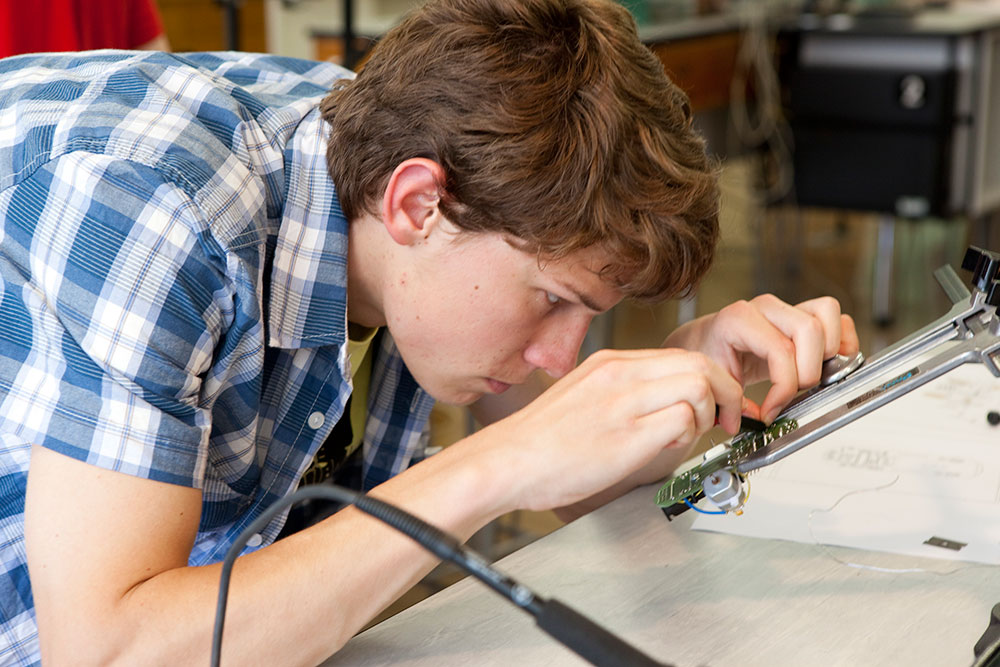With access to a range of hardware and software resources, and a team of experienced research scientists and engineers, SERC is able to provide world-class intellectual skills to support research and commercialisation activities. Here you can find information on some of our main research areas.
Research in Unmanned Aerial Vehicle (UAV) technology is now one of the main focus areas of SERC. We carry out research projects in many areas of this technology including:
- Autopilot control systems
- Airframe design and evaluation
- Charging systems
- Automated flight and charging systems
- On board sensor development
- Multispectral imaging systems
- Thermal infrared (FIR) survey systems
- Sensor stabilisation techniques
To facilitate this work, the research Centre administers a large UAV test range in the South Island of New Zealand, which is open for external users when they are engaged in work with UC. Within this test range, SERC has the unique authorisation from the CAA to fly “beyond visual line of sight”, which is otherwise not permitted in the aviation rules.
SERC has been influential in the formation of new Civil Aviation Rules for New Zealand, which were announced in August 2015, and will be reviewed on a regular basis.
SERC is also a founding member of the UAVNZ industry association.
The SERC team has detailed technical and practical operational knowledge in the field of position and navigation, particularly the integration of different technologies to overcome the limitations of individual sensors. The team has experience of a range of sensors include GPS, IMU, computer vision and Ultra-wideband (UWB).
Relevant expertise and experience includes:
- Development of in-house software libraries based on specialised Kalman Filters capable of integrating a variety of sensors (INS, GNSS, video, DR) to produce precise solutions for position, velocity, acceleration, etc.
- The evolution of the SERC software filter to an open interface architecture able to utilise data from other sensors including pseudolites, Bluetooth, RFID ranging and other emerging technologies.
- Integration of low-cost GPS and INS sensors for applications such as indoor positioning and urban navigation.
- Integration of GPS, INS and other sensors for continuous positioning in difficult environments.
- Application of positioning technologies to novel applications such as structural monitoring and asset trackers.
Internal technology developments currently ongoing within SERC include:
- Attitude and heading determination from multiple GPS receivers.
- Low cost sensor combinations for position and orientation determination on UAV platforms.
- Integration of low-cost GPS and Dead Reckoning (DR) sensors for urban navigation.
- Auto pilot systems for UAS platforms.
The SERC team have a high level of expertise in visible image processing, particularly the analysis of time-varying data. Expertise and experience of direct relevance to the issues of navigation, orientation and image analysis include:
- Image processing to reduce the effects of noise, extract image features, reconstruct missing image information, and calibrate cameras.
- Analysis of high-dimensional data (such as pixel arrays) through dimensionality reduction methods such as Principal Components Analysis (including the analysis of uncertain or incomplete data sets).
- The construction of 3D models from 2D images, from classical photogrammetry to close range transform invariant feature correspondence approaches.
- Motion analysis including target tracking and dealing with uncertainty and ambiguity through Kalman and Particle filtering.
- The combination of 3D model construction and motion analysis techniques to form 4D (3 spatial + 1 temporal dimension) models which capture the characteristic shape and deformation of an object.
- Applications, in collaboration with domain experts, ranging from biological sciences (microscope images of plant cells), through palaeoanthropology (fossil footprint reconstruction), to social sciences (tracking head motions for conversational analysis).
SERC team members have a high degree of expertise in the areas of RF signal propagation and specialised GNSS signal processing including:
- General data acquisition and processing, either for real-time or post processing results.
- General microprocessed system development/integration to address specific signal processing/size/power requirements.
- Indoor GNSS positioning using RF propagation mapping systems.
- Specialised antenna design for bespoke data communications.
- Robust data communication over 'RF noisy' environments with the use of dedicated signal modulation.
- RF signal propagation mapping and ray-tracing for a variety of specific applications.
- RFID performance enhancements.
- Low power data communications in rural environments.
Ongoing internal research in the area of software based radio receivers also opens up additional possibilities for positioning in difficult environments (eg indoors), based on the integration of multiple RF signal sources including GNSS systems (GPS, Galileo, Glonass), mobile telephone systems, digital TV and others.
SERC is developing a portfolio of hardware and software solutions to enable cost effective aerial mapping. The focus is on flexibility and customised client solutions with "plug and play" variations:
- Aerial platform - microlight, fixed-wing aircraft, helicopter, UAV, etc.
- Imaging sensor - visible, thermal, multispectral, etc.
- Geo-referencing accuracy - different types of GPS receiver / processing, different IMU options, etc.
- Data processing options - direct geo-referencing to full DEM generation and bundle adjustment.
SERC has experience using microlight and fixed wing aircraft flying at day and night with visible and thermal sensors.
As well as offering customised airborne mapping solutions, the team has developed a range of hardware and software aerial mapping systems as well as data processing services.
If you are interested in discussing any of the research undertaken by SERC and the benefits that it and the SERC team may provide your organisation, please contact us.
Opportunities for collaboration include:
- Contract research
- PhD research
- Access to Hardware, software facilities and IP
- Joint developments
- Postgraduate degree projects

